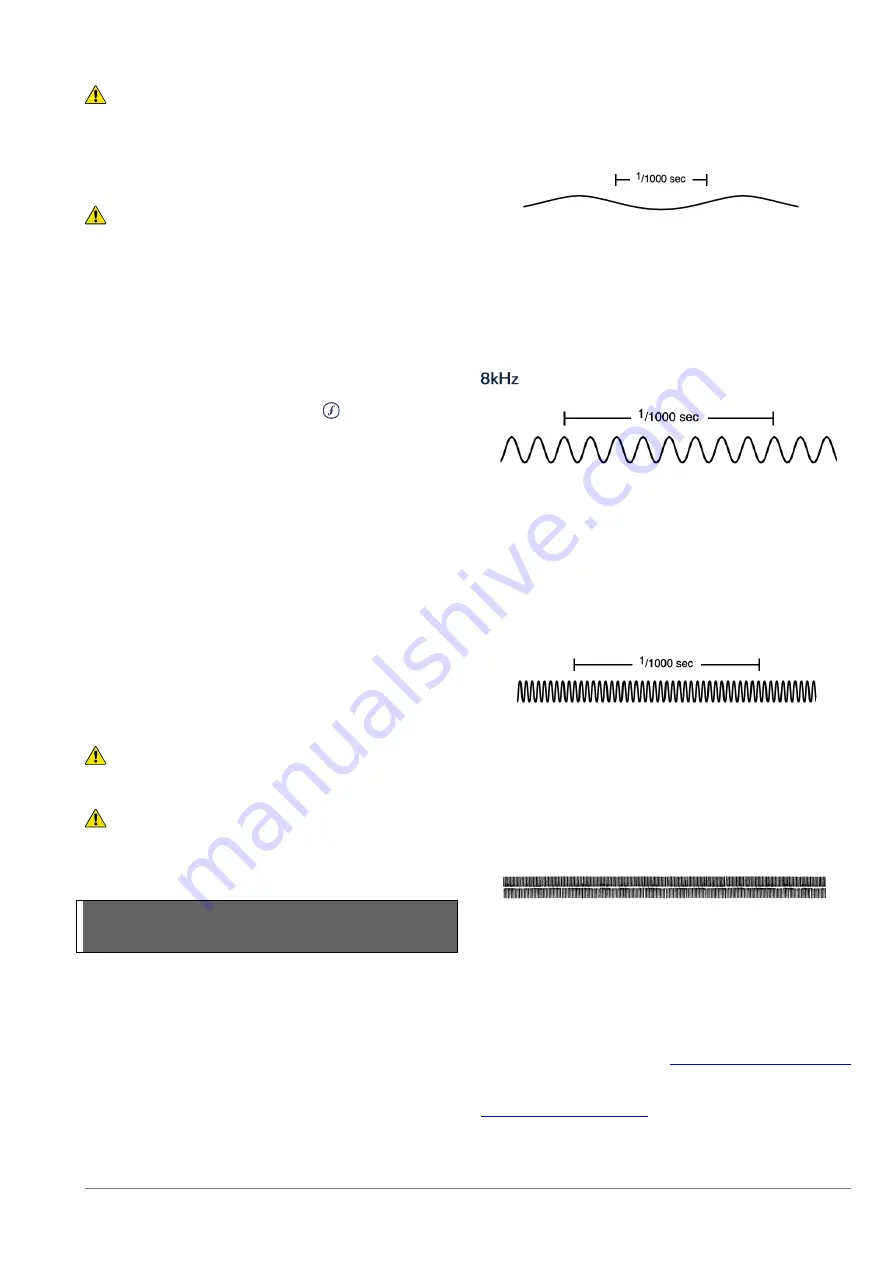
© 2020 Radiodetection Ltd
23
WARNING! The transmitter is capable of outputting
potentially lethal voltages. Take care when handling the
terminals, connection leads and ground stake, notify other
technicians working on the line of the hazard and guard
exposed conductors to prevent accidental contact.
WARNING! Ensure the TX transmitter is switched OFF
before making a connection and before disconnection of the
direct connection lead to a service.
Induction
In this mode of operation, the transmitter is placed on the
ground over or near the survey area. If a Direct
Connection lead or signal clamp is not plugged into the
transmitter, it will automatically go into induction mode.
In this mode, only frequencies applicable for induction
mode will be made available as the
key is pressed.
Once activated the transmitter will induce the signal
indiscriminately to any nearby buried conductors.
Please note that these signals will also be airborne and
it is advisable to keep the distance between the
transmitter and locator at least 10m /
30’ – this distance
may need to be increased, particularly if depth
measurements are taken.
Signal clamp
An optional signal clamp can be connected to the
transmitter and clamped around a cable or pipe to apply
the transmitter signal. This method of applying the
transmitter signal is particularly useful on insulated live
wires and removes the need to disconnect the supply to
the cable. Clamps are available
up to 8.5” / 215mm in
diameter.
WARNING! Do not clamp around uninsulated live
conductors
WARNING! Before applying or removing the clamp
around a power cable, ensure that the clamp is connected
to the transmitter at all times.
5.2 Choice
of
frequency
for
active location
The choice of signal frequency is an important factor for
effective tracing and identification of buried lines, and
there is no single frequency that covers all conditions.
For simple instruments to be used by relatively non-
technical personnel, there is no option but to make a
compromise, and choose a single frequency high
enough to give good performance in the induction mode,
but not so high that it will couple too easily into unwanted
lines. Active signals between 8kHz and 33kHz are
commonly used for these applications. For more
comprehensive equipment for problem-solving by
technically
competent
technicians,
a
range
of
frequencies may be provided. Typical examples of these
and reasons for their use are illustrated below.
512Hz
Figure 5.2 512Hz active signal
This low frequency is most useful for line tracing and
identification over long distances. It does not couple
easily to unwanted lines
however
it is too low for
induction, and it falls within the band of power frequency
harmonic interference.
Figure 5.3 8kHz active signal
This medium frequency is the most useful general-
purpose signal, high enough for induction, outside the
power frequency interference band, and with limited
coupling to wanted lines
however
it may not be high
enough to impose a strong signal on small diameter line
like telecom cables.
33kHz
Figure 5.4 33kHz active signal
This higher frequency is easily applied by induction to
most lines, so is very useful for initial search. It travels
on small diameter line
however
it couples more easily to
unwanted lines, and loses its strength over shorter
distances than lower frequencies.
100kHz and Over
Figure 5.5 100kHz active signal
This very high frequency range deals with the difficult
cases
– induction onto small diameter lines in dry sandy
soil, and short lengths of cable. It is very easy to apply
by induction
however
it couples very easily to unwanted
lines, and does not travel far.
For more information see Section 5.1, visit the
Knowledge Base
section in
or refer to the application note
“The theory of buried pipe
location
”, which is available as a free download from






























